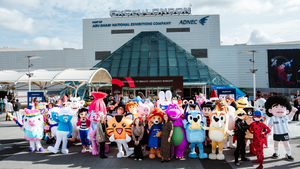Consumers Delay Back-to-School Shopping
While retail is promoting back-to-school season in stores now, many parents and college students are waiting for better deals, according to the National Retail Federation and Prosper Insights and Analytics.
July 12, 2018

While retail is promoting back-to-school season in stores now, many parents and college students are waiting for better deals, according to the National Retail Federation and Prosper Insights and Analytics.
In their annual survey, total spending for K-12 schools and college combined is projected to reach $82.8 billion, nearly as high as last year’s $83.6 billion.
Most back-to-school shoppers (77 percent) plan to start at least three weeks before school begins, up from last year’s 74 percent and 64 percent a decade ago. However, nine out of 10 (89 percent) back-to-school and college shoppers still have half or more of their purchases left to complete. Of these, more than half are still waiting for the best deals for the items on their lists.
“With the economy thriving thanks to tax reform and growing consumer confidence, we expect to see a very strong season,” Matthew Shay, president and chief executive officer, NRF “College spending is expected to be at its highest level ever, and back-to-school will be one of the three highest years on record. Whether shoppers buy now or wait until the last minute, retailers are ready with everything they need for a successful start of the school year.”
Families with children in elementary through high school plan to spend an average of $684.79 each, compared with last year’s $687.72 for a total of $27.5 billion. It’s the third-highest total in the history of the survey with $30.3 billion in 2012 and $29.5 billion in 2017.
College and graduate students plan to spend an average $942.17 each, down from last year’s $969.88 for a total of $55.3 billion, an all-time high in the history of the survey, up from last year’s previous record of $54.1 billion.
Back-to-school shoppers plan to spend on items such as clothing and accessories, electronics, and supplies such as notebooks, pencils and backpacks. College shoppers, however, will spend the most on electronics, with clothing and accessories, dorm and apartment furnishings, food, school supplies closely following.
Read more about:
NRFAbout the Author(s)
You May Also Like






